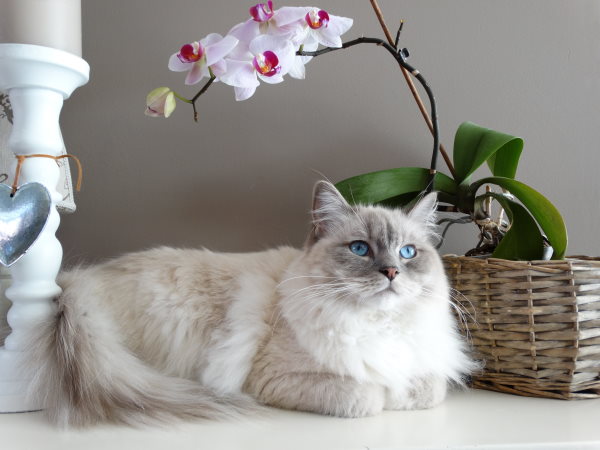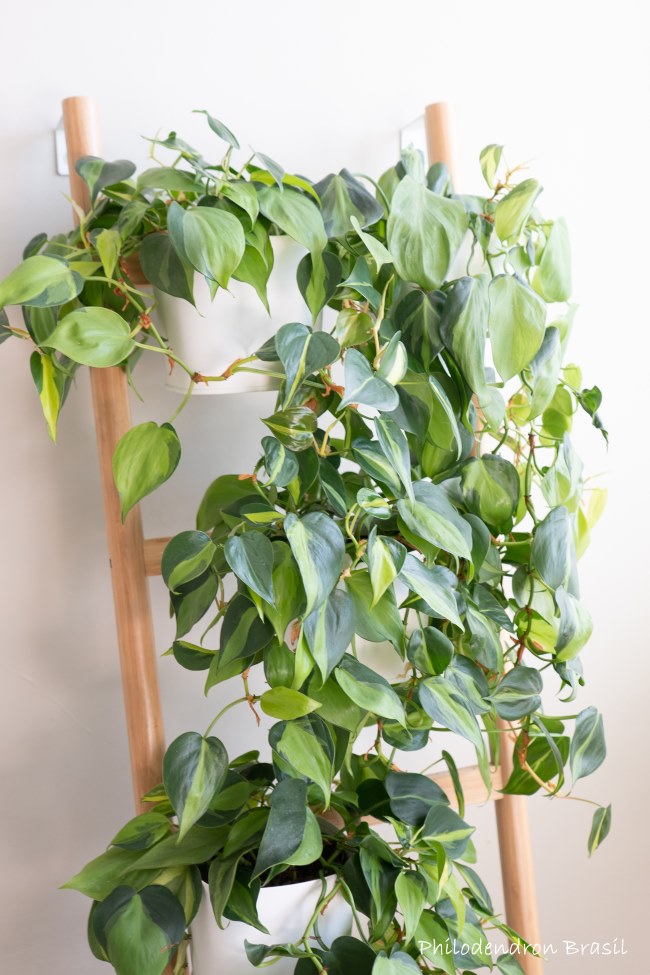Spider Orchid
Botanical Name: Brassia Orchid Species and Hybrids
Who can resist the spider orchid. From the tops of their spikey dorsal sepals to the narrow trailing sepals that can hang 10 in (25 cm) or more, their unusual flowers captivate even the casual orchid grower.
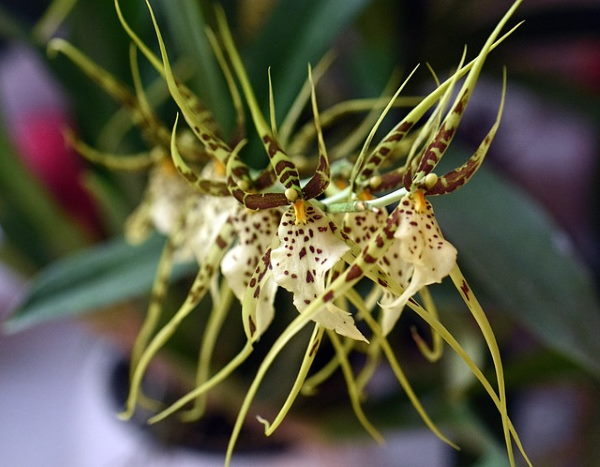 Captivating flowers make Spider Orchids irresistible. Image by Denis Doukhan
Captivating flowers make Spider Orchids irresistible. Image by Denis Doukhan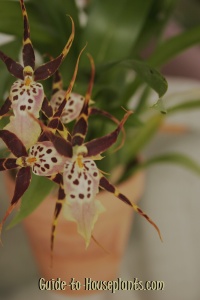
These plants are big, with sprawling flower spikes that require a bit of space. One flower spike can have as many as 20 spidery blooms at one time -- in spotted yellow, cream, brownish-red or green.
Many Brassia orchids available are hybrids, taking on new colors and forms. However, Brassias tend to transform anything they're bred with into a spectacular spider-like shape.
Most bloom in spring or summer, but some claim their Brassia orchids bloom in winter. I believe it varies with the species, growing conditions and sunlight intensity.
Green Thumb Tip
Spider orchids are epiphytes in the wild, growing on tree branches.
The "secret" to keeping beautiful Brassia orchids happy is to provide the bright filtered light and high humidity as in their native rainforest habitat.
Brassias grow from pseudobulbs and sometimes send up 2 flower spikes per bulb. The showy flowers last for several weeks and sometimes have a spicy fragrance.
What to do after the bloom. Brassia orchid plants need a rest for about 6-8 weeks. Provide lower light levels, slightly cooler temperatures (no cooler than 60°F/16°C), water sparingly, and stop fertilizing. Don't skip this much-needed rest...it helps trigger future flowers.
Wondering When to Repot Spider Orchid?
After a couple years, the fir bark medium breaks down, holding too much moisture around the roots. Good air circulation around its roots is essential for a healthy orchid. It's a good idea to repot your orchid every 2 years to replace the medium.
Use medium-grade fir bark to allow good drainage. Don't pack it down, keep it loose because these epiphytes also need some air around its roots.
Never repot a plant while it is blooming, because repotting is stressful to a plant and it may drop its flowers.
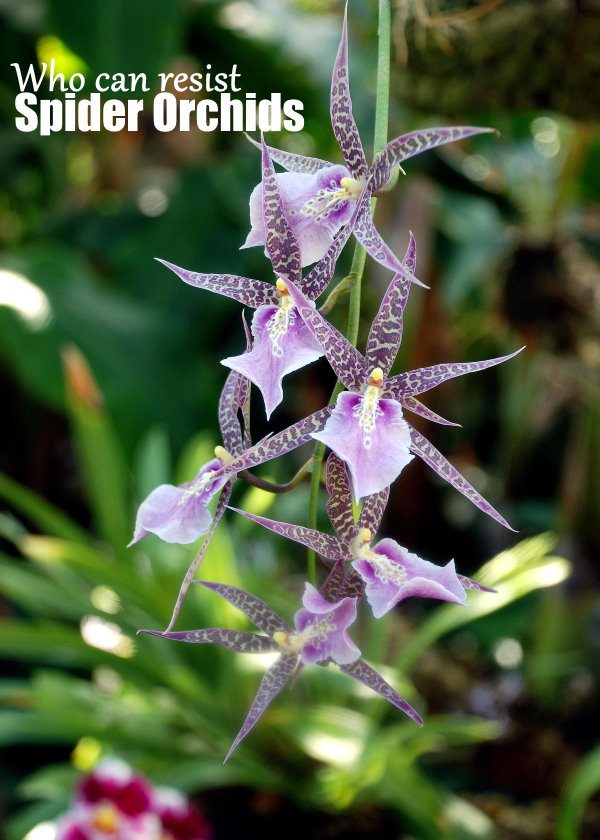
Spider Orchid Care Tips
Origin: Central and South America
Height: Up to 24 in (60 cm)
Light: Bright indirect light while orchid is growing and blooming. After flowering is over, lower light levels.
Water: Water thoroughly and allow the medium to almost dry out between waterings. Never allow the medium to dry out completely or to stay soggy, which causes root rot. Brassia orchids need more water while budding and blooming.
Humidity: High, preferably 60-70% relative humidity. Indoor air can become extremely dry during the winter months without our noticing it. It's a good idea to use a humidity monitor near tropical houseplants, rather than guess. Use a wet pebble tray or a cool-mist room humidifier, if needed.
Temperature: 60-65°F/16-18°C nights and 65-75°F/18-24°C days
Soil: Medium-grade orchid fir bark
Fertilizer: Feed every 2 weeks with a 20-10-10 liquid fertilizer diluted by half while plant is growing and flowering. Stop feeding your orchid after it's finished blooming. You can start feeding it again when you see new growth begin.
Propagation: Division
